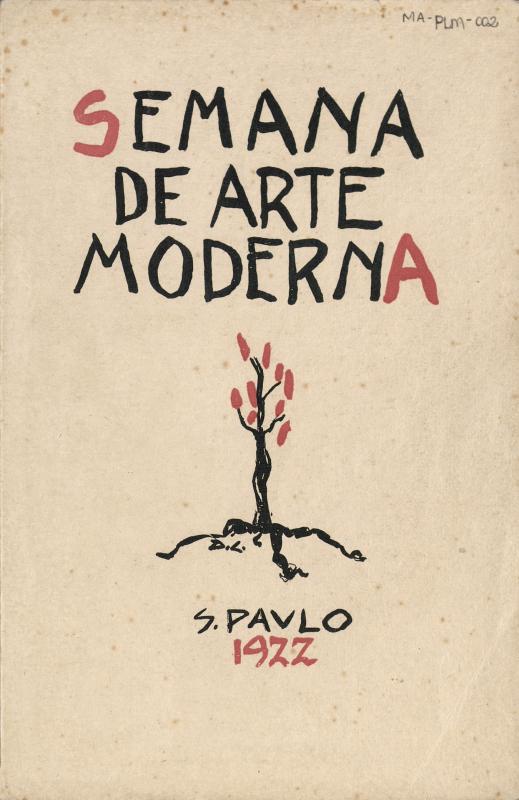This article by the writer, translator, and art critic Monteiro Lobato (1882–1948), “A propósito da exposição Malfatti,” was published in the newspaper O Estado de S. Paulo a week after the opening of Exposição de Pintura Moderna—Anita Malfatti, the exhibition held in São Paulo from December 12, 1917 through January 11, 1918 that included the Brazilian artist Anita Malfatti (1889–1964) and the North Americans Abraham S. Baylinson (1882−1950), Floyd O’Neale, and Sara Friedman. In his article, Lobato rails against modern art trends and, despite acknowledging Malfatti’s talent and drive, attacks the style that she and the other participating artists chose for the exhibition. Impervious to the fact that he had annoyed the artist when this article originally appeared, things were stirred up even more two years later when she saw that it had appeared again, under a new title, “Paranóia ou Mistificação” in the collection of Lobato’s essays Ideias de Jeca Tatu published in the Revista do Brasil, in São Paulo, in 1919. The collection included 35 articles on a range of subjects, such as literary criticism, the visual arts, and of course opinion pieces written for the press. The group of intellectuals that became known as the Grupo dos Cinco (which included Tarsila do Amaral (1886−1973), Mário de Andrade (1893−1945), Oswald de Andrade (1890−1954), Menotti del Picchia (1892–1988), and Anita Malfatti), subsequently came to the artist’s defense and described her work as a fine example of Brazilian artistic renewal [see doc. no. 780289)]. It should be noted that the response from this group of intellectuals profoundly influenced the thinking of the modernist movement in São Paulo and found its eventual expression in the Semana de Arte Moderna in 1922 [doc. no. 781808].
The correct name of the North American artist referred to above as “Bolynson” is actually Abraham S. Baylinson, a colleague and fellow student of Malfatti’s at the Independent School of Art in New York. Founded and administered by the artist Robert Henri (1865−1929) in 1909, the Henri School of Art was purchased by one of Henri’s students—Homer Dean Boss (1882–1956)—who changed the name to Independent School of Art.


